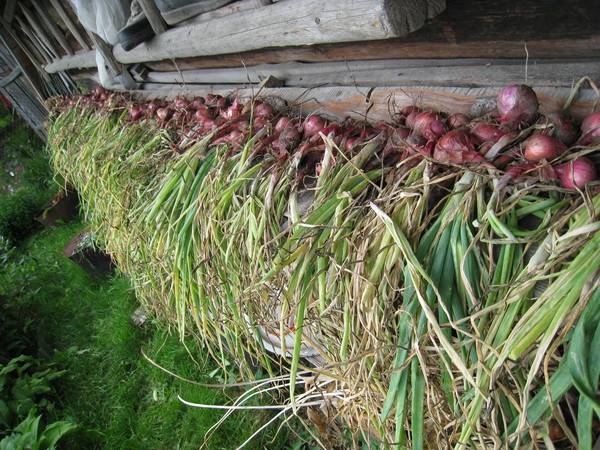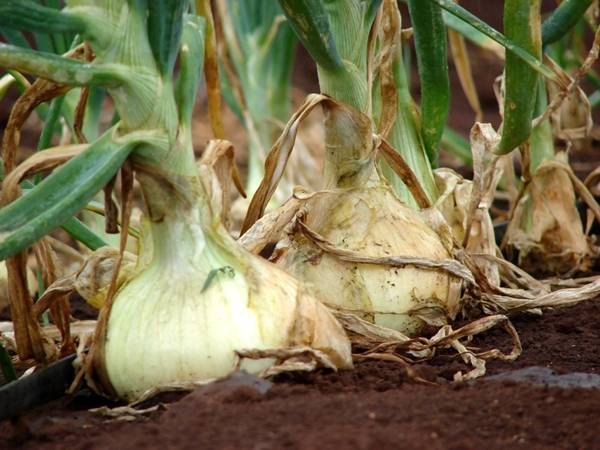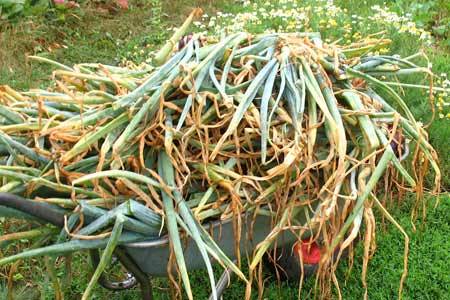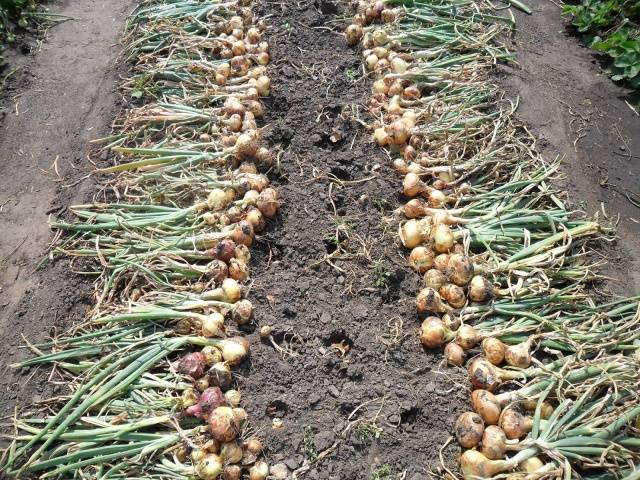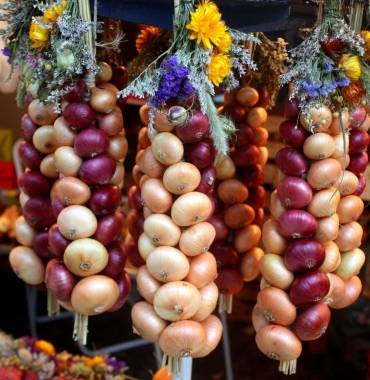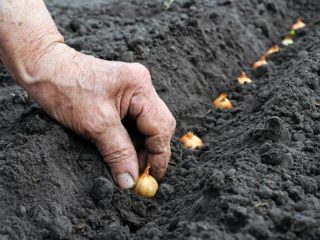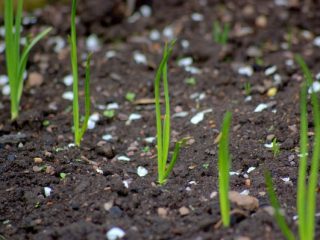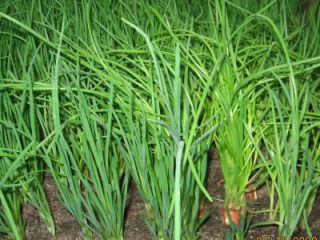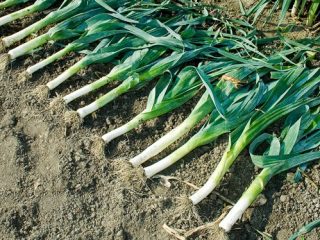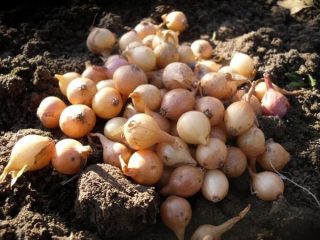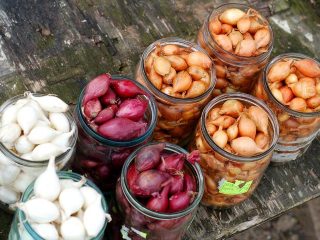For most gardeners onion is one of the main vegetable crops. And this is not without reason, since a good housewife uses onions in almost every savory dish she prepares. And when the time comes to prepare for the winter, not a single twist can do without it. Well, even children know about the beneficial and medicinal properties of onions. In addition, in the garden, thanks to its phytoncidal properties, it often acts as a repeller of various harmful insects. But if the experience of gardening is still limited, many people sometimes find it difficult to determine exactly when to harvest onions. But depending on how timely the bow was removed from the garden, the extent and duration of its storage in winter depends.
What determines the timing of onion harvesting?
Many people have heard from their grandparents that onions need to be harvested when their leaves begin to turn yellow, dry out and fall off. But only experience makes it possible to distinguish leaves that are yellow and withered due to disease from onion feathers that dry out naturally. In addition, it happens that it’s already August and the onions continue to turn green as if nothing had happened. What to do in this case? You need to figure out for yourself when you still need to harvest onions in the Moscow region and what these terms depend on.
After all, if it is removed ahead of schedule, then it may not have time to form covering scales, and its neck will remain thick and open. Pathogens of various diseases can easily penetrate through it while the bulbs are still in the garden. Therefore, when stored, these bulbs will quickly deteriorate.
If the onion is left in the garden for too long, it may crack and dry scales may fall off and the roots will begin to sprout again, which will also adversely affect the further storage of the bulbs.
It is at the moment of yellowing and lodging of green onion feathers that the maximum amount of nutrients usually accumulates in the bulbs. In this case, the false stem usually softens, loses its elasticity, and the formed bulb acquires a color characteristic of the planted variety.
Respectively onion harvesting time directly depend on the type of plant you planted.
Therefore, if you planted onions in the traditional time frame for the Moscow region - mid - late May, then the time for harvesting the bulbs should be at the end of July - mid-August.
In general, novice gardeners can be recommended to write down the date of planting the onion sets in the ground and after 70 days check whether they are ready for harvesting or not.
Wait two or three days. If during this time the stem begins to emerge from the neck again, it means the onion is not yet ripe.
Let it sit in the ground for another week or two. If you don’t notice any changes, you can safely dig it up.
But at the same time, it is worth considering that the ripening of bulbs is greatly influenced by weather conditions: temperature and amount of precipitation. If the summer was quite warm and dry, or even hot, then the bulbs are able to ripen much faster than expected. If there was a lot of rain in the first summer months, and the temperature could be called cool rather than hot, then by August the onions may not be ready for harvesting. If the dates that you have determined are already approaching, and its leaves still continue to turn green, the neck continues to remain juicy and thick, and the bulbs have imperceptibly colored scales, then you can try to speed up the ripening process in various folk ways.
This is especially important to do if the weather forecast predicts rainy weather soon. After all, not only do onions need to be harvested in sunny and dry weather. After cleaning, it still needs careful and prolonged drying.
So, what can you do to speed up the ripening of the bulbs:
- First of all, completely remove watering from the bulb beds 2-4 weeks before the expected harvest date.
- After the onion feathers have practically stopped growing, it is advisable to rake away the soil and almost completely free the bulb. This technique is especially relevant for northern regions and heavy clay soils, where solar heat does not reach the bulbs hidden underground.
- You can also carefully lift the bulbs with a fork, slightly tearing the roots and thereby reducing the flow of nutrients into the bulb. Some gardeners completely mow down the leaves a week before harvesting - but this is not the best technique, as it leads to significant losses in yield.
- But trampling down green onion feathers prevents the formation of flower shoots, and thereby saves a significant part of the harvest.
It is necessary to understand that the ripening time of the bulbs also depends on their growing method. If you grow onions from seeds, the ripening time will increase significantly. There are also two options here. When sowing seeds (nigella) in winter, onions are usually harvested in the second half of August. If you sow the seeds in early spring, the bulbs will not ripen until early September. After harvesting and drying, onions must be sorted into the following types:
- Onions (at least 4-5 cm in diameter)
- Onion sets (diameter from 1 to 4 cm)
- Onion sets planted before winter (less than 1 cm)
Features of onion harvesting
It is most favorable to harvest onions in dry and windy weather. If the beds have light sandy loam soil, then the bulbs are very easily pulled out of the ground by the dried leaves. On heavier soils along the rows, it is necessary to lift the soil with a fork or shovel at some distance from the bulbs to avoid damaging them. In addition, when digging, it is better to select the bulbs with your hands, since if you pull them out carelessly, the bulb may lose its bottom and easily rot during subsequent storage.
If necessary, carefully remove the soil from the bulbs by hand. Immediately after harvesting, the onions must be thoroughly dried. If the weather is dry, warm and sunny, then the crop is laid out directly on the ground in rows so that the bulbs face one way and the leaves face the other.Plants must be turned over every day so that the sun has time to warm up and disinfect all the bulbs. This drying process should last at least two weeks. In unfavorable weather conditions (rain, cloudy weather), it is better to lay out the crop to dry under a canopy or in any ventilated room under a roof.
Even while harvesting the onion, it is necessary to sort it out, selecting damaged bulbs, as well as those that have a thick neck left. They will need to be consumed first, since they cannot be stored for long periods of time.
Drying the onions ends when all the onions have a thin and dry neck, and you can freely stick your hand into the pile of onions. If your hand gets stuck, it means the onion is not completely dry.
Unfortunately, the weather is not always favorable, and sometimes onions have to be harvested in the rain and in the absence of sun. In this case, the bulbs must be immediately washed, cleaned of greens and husks, the roots cut off and laid out in one layer in a warm, dry, ventilated room. After 18-20 days, the bulbs will have a new layer of outer husk. It can be placed in cardboard boxes and stored in a dry, frost-free room.
If the onions were grown in soils that were too wet or rich in manure, then regular drying may not be enough. To protect such onions from neck rot during storage, they must be additionally dried at high temperatures. At a temperature of +42°+43°C, eight hours of drying is enough; at a temperature of +32°+33°C, it takes about 5 days.
Store onions braided in braids - in this case, the dry leaves are not cut off. Or you can cut the leaves 4 cm from the neck and place them in cardboard boxes or nylon stockings and hang them. In this form, onions can be stored for up to 18 months.
It’s not difficult to decide when to harvest onions – you just need to monitor the weather conditions and the condition of the plants themselves.
